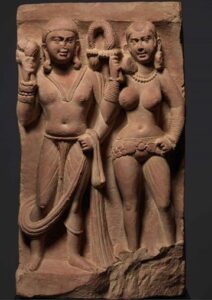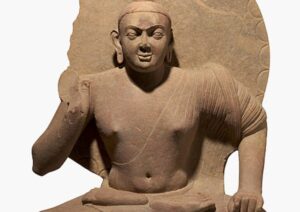
Indian relief seized from the Nancy Wiener Gallery in Manhattan.
(Photo Credit…Manhattan District Attorney’s Office)
Our founder, Leila A. Amineddoleh, spoke with the New York Times today about important revelations from statements submitted to the New York County Supreme Court by antiquities dealer Nancy Wiener during the pending criminal case against her. After pleading guilty to charges of conspiracy and possession of stolen property in connection with the trafficking of looted treasures from India and Southeast Asia, Ms. Wiener filed an allocution statement that reveals the inner workings of the antiquities market. (After pleading guilty, a defendant is often offered an opportunity to address the court in a so-called allocution statement to accept responsibility, express remorse, and explain circumstances that might be considered favorably in sentencing.)
Ms. Wiener and her late mother sold works to the New York elite. They are credited with growing the market for Southeast Asian art, selling works to John D. Rockefeller III, Igor Stravinsky and Jacqueline Kennedy. Works from their gallery also appear at major museums nationally and internationally. In March 2015, Ms. Wiener reimbursed the National Gallery of Australia over a million dollars for a Buddha she had sold the institution in 2007, after it was discovered that the export of the item may have violated India’s laws.

National Gallery of Australia’s Seated Buddha (Photo Credit: Chasing Aphrodite)
In 2016, federal officials and the Manhattan District Attorney’s Office raided a number of galleries during Asia Week in New York. One of those galleries belonged to Ms. Weiner. The government seized objects from her gallery, arrested Ms. Wiener, and filed a felony complaint accusing the dealer of working with stolen objects for decades. Amineddoleh has spoken about the criminal case against Ms. Wiener in the past, including in 2017 when she was invited to speak during a conference for the National Trust for Historic Preservation.
The charges allege that Ms. Wiener obtained millions of dollars’ worth of stolen artifacts from international smugglers and sold them illegally — often through major auction houses. She is alleged to have laundered the illicit items by procuring restoration services to hide damage from illegal excavations, using straw purchases at auction houses to create sham provenances, and inventing and disseminating false histories to circumvent international patrimony laws that prohibit the exportation of looted antiquities. Upon her mother’s death, Ms. Wiener allegedly inherited hundreds of illicit items, discarded their records, and fabricated provenances. She then consigned hundreds of lots for sale at auction for millions of dollars.
In pleading guilty to these allegations, Ms. Weiner’s allocution statement reveals a great deal about the antiquities market. She characterizes that market as “a conspiracy of the willing,” saying that antiquities are often sold or consigned despite having suspect provenance — or no provenance at all. She also admits in detail to committing the common (and illegal) practice of fabricating provenance information to facilitate the sale or consignment of looted items. Despite claiming that her actions were motivated by her “passion” for the “great beauty” of historical objections, Ms. Weiner acknowledges that “it is not the right of any individual or institution to decide how to handle the cultural patrimony of another nation.”
Read more about the case in this article by Tom Mashberg.